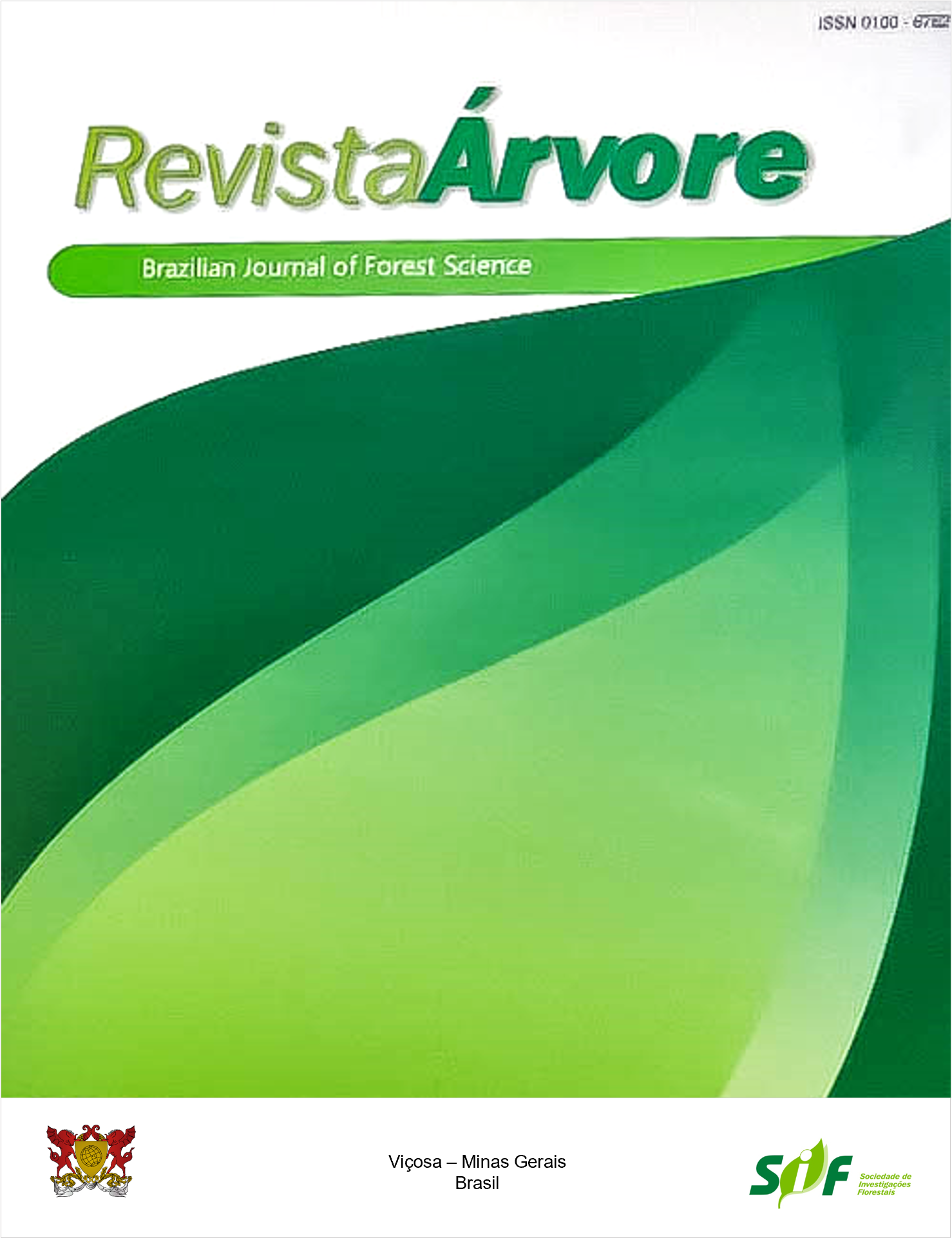VEGETATIVE PROPAGATION OF Hymenaea courbaril L. AND Apuleia leiocarpa (VOGEL) J. F. MACBR. BY MINI-CUTTING
Keywords:
Rooting, auxin, FabaceaeAbstract
The objective of this work was to evaluate the vegetative propagation of Hymenaea courbaril (jatobá) and Apuleia leiocarpa (garapa) using the mini-cutting technique with the use of indolebutyric acid (IBA) growth regulator in different types of mini-cuttings. Two experiments were set up: the first involving the two species and three mini-cutting techniques (basal, intermediate and apical) in the presence and absence of IBA (4000 mg kg-1). In the second experiment, only the garapa species was evaluated by testing the same three mini-cutting techniques at four IBA concentrations: 0, 1000, 2000 and 4000 mg kg-1. The mini-cuttings were obtained from 6-month-old seedlings produced from seeds in a nursery. A randomized block design was used in a 3 x 2 x 3 factorial scheme (three mini-cutting techniques, two IBA concentration levels and three evaluation dates) in the first experiment, and a 3 x 4 x 3 factorial scheme (three mini-cutting techniques, four IBA concentrations and three evaluation dates) in the second experiment. At 90 days, jatobá had an average survival of 54%, with less than 5% of total rooting, without significant influence of the mini-cutting technique or IBA use. Garapa presented higher survival for the basal mini-cuttings in both experiments, which were the only ones that took root. IBA did not influence survival or rooting percentage of garapa mini-cuttings, but negatively influenced the root number, length and dry mass. We concluded that the basal mini-cutting is a viable technique for vegetative propagation of garapa, presenting 40% of rooting, but the propagation by mini-cutting for jatobá was not successful under the conditions of this study.
Keywords: Rooting; auxin; Fabaceae
Downloads
Published
How to Cite
Issue
Section
License
Copyright (c) 2021 Revista Árvore

This work is licensed under a Creative Commons Attribution 4.0 International License.
All authors agreed to submit the work to Revista Árvore and granted the exclusive license to publish the article. The authors affirm that it is an original work and has not been previously published elsewhere. The scientific content and opinions expressed in the article are the sole responsibility of the authors and reflect their opinions, not necessarily representing the opinions of the editorial board of Revista Árvore or of the Society of Forest Investigations (SIF).




